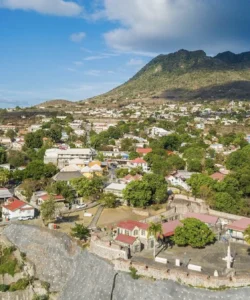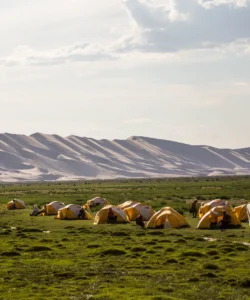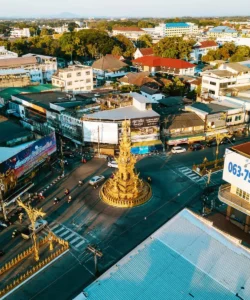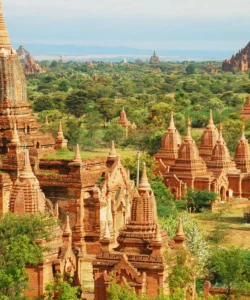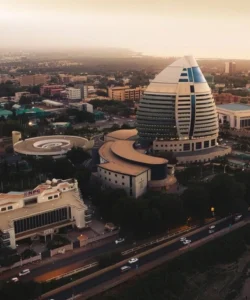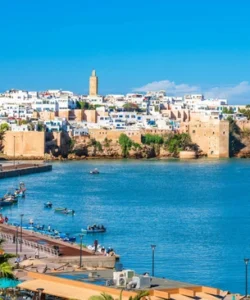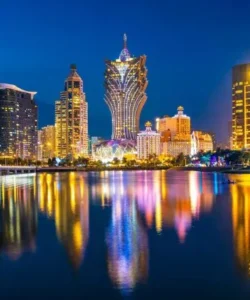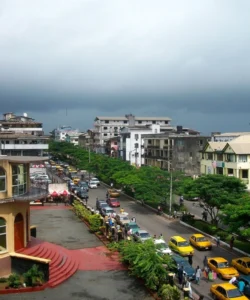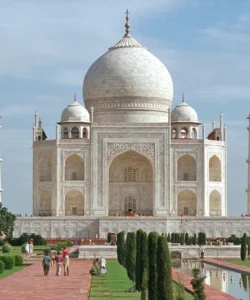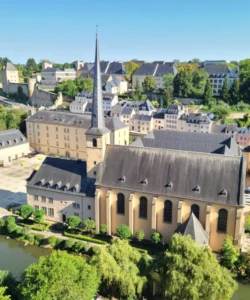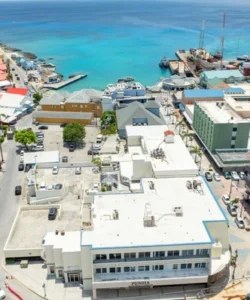Zimbabwe is a landlocked country in Southern Africa, renowned for its spectacular landscapes and rich wildlife. Its history has been marked by periods of economic and political instability.
![]()
Area: Approximately 390,757 square kilometers.
Population: The population of Zimbabwe was estimated at around 15.1 million in 2022.
Language: Zimbabwe has 16 official languages, including Chewa, Chibarwe, English, Kalanga, Koisan, Nambya, Ndau, Ndebele, Shangani, Shona, Sign Language, Sotho, Tonga, Tswana, Venda, and Xhosa. Shona and Ndebele are the most widely spoken. English is commonly used for commercial purposes.
Currency: The Zimbabwean Dollar (ZWD) is the official currency. However, a multi-currency system, including the US Dollar and South African Rand, has also been in use.
Religion: The majority of the population is Christian (around 81.74%), with various denominations.
Capital: Harare
Major Cities: Besides Harare, other notable cities include Bulawayo, Mutare, Gweru, Kwekwe, and Victoria Falls.
Attractions & Wonders:
- Victoria Falls: One of the world’s largest waterfalls, shared with Zambia, known as “Mosi-oa-Tunya” (“the smoke that thunders”). It offers stunning views, bungee jumping, helicopter flights, white-water rafting, and sunset cruises.
- Hwange National Park: Zimbabwe’s largest national park, home to a vast population of elephants, as well as over 100 species of mammals and 400 types of birds.
- Mana Pools National Park: A UNESCO World Heritage Site known for its remote wilderness, excellent walking safaris, and canoeing opportunities along the Zambezi River, where you can see hippos, crocodiles, and various birdlife.
- Matobo Hills National Park: Famous for its unique granite rock formations (balancing rocks), ancient San rock paintings, and as the burial site of Cecil Rhodes. It’s also a great place for rhino tracking.
- Great Zimbabwe National Monument: An ancient city ruins, a UNESCO World Heritage Site, offering a glimpse into a sophisticated pre-colonial civilization. It showcases impressive dry-stone masonry.
- Lake Kariba: A massive man-made lake offering opportunities for game viewing, fishing (especially for tiger fish), birdwatching, and houseboat experiences.
- Chinhoyi Caves: A series of limestone and dolomite caves with a cobalt blue pool known for its clear waters.
Architecture:
Zimbabwean architecture is influenced by traditional and colonial styles. Pre-colonial architecture is best exemplified by the Great Zimbabwe National Monument, featuring well-coursed, thick stone walls constructed on earth foundations. Traditional rural houses often feature thatched roofs with mud walls, while modern buildings in urban areas tend to have concrete walls and corrugated iron roofs, reflecting European influence. Post-modernist architecture can be seen in buildings like the Reserve Bank of Zimbabwe and Harare International Airport.
Roads:
Zimbabwe has a classified road network of about 88,300 km, with approximately 15,000 km paved. Primary roads, often called “National Roads or Highways,” are generally in good condition and connect major cities and neighboring countries. Zimbabwe is crossed by two trans-African routes: the Cairo-Cape Town Highway and the Beira-Lobito Highway. While national highways are generally uncongested, urban and unpaved rural roads can experience deterioration.
Hotels & Accommodation:
Zimbabwe offers a diverse range of accommodations, from luxurious hotels and safari lodges to cozy guesthouses and budget-friendly campsites. In major cities like Harare and Victoria Falls, you’ll find a variety of options, including well-known hotel chains and independent establishments. Safari lodges are popular near national parks, offering an immersive wildlife experience.
Restaurants & Cuisine:
Zimbabwe’s dining scene blends traditional flavors with international influences. You can find fine dining establishments, casual cafes, and street food vendors, particularly in cities like Harare, Bulawayo, and Victoria Falls. Many restaurants offer traditional Zimbabwean cuisine, while others serve African, European, and Asian dishes.
Cuisine:
Zimbabwean cuisine is deeply rooted in tradition, with staple foods including:
- Sadza: A thick porridge made from maize meal, often served with various relishes.
- Nyama: Meat, which can include beef, chicken, or game meats like crocodile, warthog, and kudu.
- Muriwo: Leafy green vegetables, often served with groundnuts (peanuts).
- Dovi (Peanut Butter Stew): A hearty stew, often made with chicken in a flavorful peanut butter sauce.
- Kapenta: Small, sardine-like fish, usually sun-dried and eaten as a snack or cooked in dishes.
- Nhedzi Soup: A traditional soup made from wild mushrooms.
- Braai: Zimbabwean barbecue, a popular social and culinary event.
- Biltong: A dried, cured meat, similar to jerky, often made from beef or game meats.
- Mazondo (Cow Hooves) and Maguru (Tripe): Delicacies known for their unique textures and flavors when slow-cooked.
Popular beverages include local beers (like Castle Lager and Zambezi), maheu (a fermented porridge drink), local fruit juices, and traditional brews like chibuku (sorghum beer) and mhamba. Zimbabwe also has a growing tea and coffee culture.

